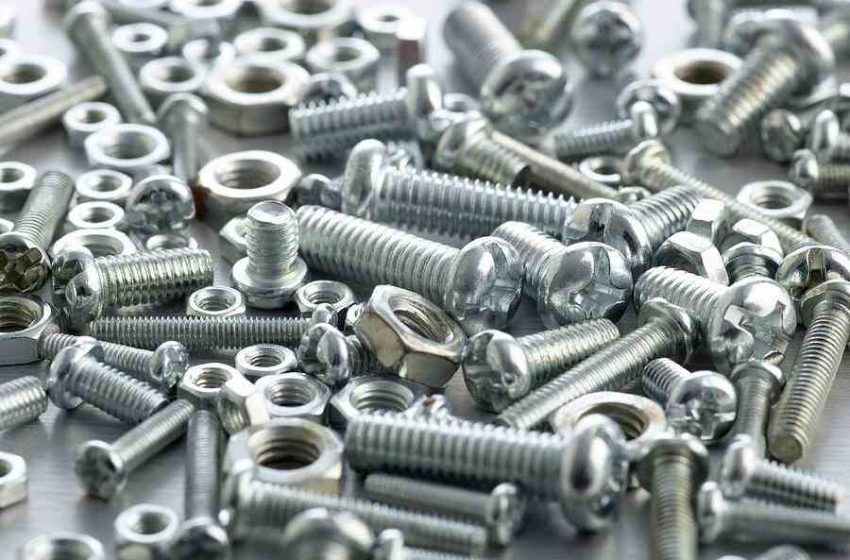Bolts and Nuts: Essential Components in Construction and Machinery

Introduction
Baut & Mur – Bolts and nuts are fundamental components in the world of construction, machinery, and various engineering applications. They are ubiquitous, providing the critical function of fastening and securing different parts together. This article delves into the types, materials, uses, and innovations in bolts and nuts, illustrating their importance in both everyday and specialized applications.
Types of Bolts and Nuts
1. Bolts
Hex Bolts: These are characterized by their hexagonal heads and are commonly used in construction and machinery. They come in various lengths and diameters, offering versatility in different applications.
Carriage Bolts: Recognizable by their rounded heads and square necks, these bolts are often used in wood connections, providing a smooth, finished appearance.
Lag Bolts: These heavy-duty fasteners are used primarily in wood applications where substantial holding power is required.
Anchor Bolts: Designed to attach structures to concrete, these bolts come in various designs like L-shaped, J-shaped, and double-end rods.
2. Nuts
Hex Nuts: The most common type of nut, used with hex bolts, providing a secure, easy-to-tighten connection.
Lock Nuts: Featuring a nylon insert or a deformed thread, these nuts prevent loosening under vibration.
Wing Nuts: With two large metal wings, these nuts can be easily tightened and loosened by hand, making them ideal for applications requiring frequent adjustments.
Flange Nuts: These nuts have a built-in washer that distributes pressure, reducing the risk of damage to the connected material.
Materials and Coatings
1. Materials
Carbon Steel: Widely used due to its strength and affordability, suitable for general applications.
Stainless Steel: Known for its corrosion resistance, ideal for use in harsh environments.
Alloy Steel: Contains additional elements like chromium and molybdenum to improve strength and durability.
Brass and Bronze: Used in applications requiring low friction and corrosion resistance, such as marine environments.
2. Coatings
Galvanization: A zinc coating applied to steel bolts and nuts to prevent rust.
Black Oxide: Provides mild corrosion resistance and a smooth finish.
Plating: Metals like nickel or chrome are used to provide additional corrosion resistance and aesthetic appeal.
Applications
1. Construction
Structural Joints: Bolts and nuts are used to connect beams, columns, and other structural elements, ensuring the integrity and stability of buildings.
Bridges: High-strength bolts are critical in the assembly of bridge components, capable of withstanding immense loads and environmental stress.
Roofing and Siding: Fasteners are essential in securing roofing materials and exterior siding, protecting buildings from weather elements.
2. Machinery and Automotive
Engine Assembly: Bolts and nuts hold together engine components, ensuring precise alignment and secure connections.
Chassis and Frame: These fasteners provide the structural integrity needed for the vehicle’s frame, ensuring safety and durability.
Maintenance and Repairs: Easily replaceable, bolts and nuts allow for efficient maintenance and repairs of machinery and vehicles.
3. Household and Furniture
Assembling Furniture: Common in flat-pack furniture, bolts, and nuts provide a simple yet effective way to assemble and disassemble pieces.
Home Repairs: Used in various household repairs, from fixing loose fixtures to assembling garden equipment.
Innovations and Future Trends
1. Smart Bolts and Nuts
Embedded Sensors: Innovations have led to the development of bolts and nuts with embedded sensors that can monitor stress, temperature, and other parameters in real-time.
IoT Integration: These smart fasteners can be integrated into the Internet of Things (IoT), allowing for remote monitoring and predictive maintenance.
2. Advanced Materials
Composite Materials: Research is ongoing into the use of composite materials for bolts and nuts, offering enhanced strength-to-weight ratios and corrosion resistance.
3D Printing: Additive manufacturing techniques are being explored to produce custom bolts and nuts, reducing lead times and enabling complex designs.
Best Practices for Use and Maintenance
1. Proper Selection
Material Compatibility: Ensure the bolt and nut material is compatible with the materials being joined to prevent galvanic corrosion.
Correct Sizing: Use the appropriate size and thread type to ensure a secure fit and prevent stripping.
2. Installation Techniques
Torque Specifications: Follow manufacturer recommendations for torque specifications to avoid over-tightening or under-tightening.
Use of Washers: Employ washers where necessary to distribute load and prevent damage to surfaces.
3. Regular Inspections
Check for Loosening: Periodically inspect bolts and nuts for signs of loosening, particularly in high-vibration environments.
Corrosion Inspection: Regularly check for signs of corrosion, especially in outdoor or marine applications, and replace fasteners as needed.
Conclusion
Hafas – tokohasil.com: Bolts and nuts are indispensable components in a wide range of applications, from construction and machinery to everyday household items. Their importance cannot be overstated, as they provide the necessary strength and stability to structures and devices. With ongoing innovations and advancements in materials and technology, the future of bolts and nuts looks promising, ensuring their continued relevance and utility in various industries. Proper selection, installation, and maintenance are crucial to maximizing their performance and lifespan, making bolts and nuts a cornerstone of modern engineering and construction.

